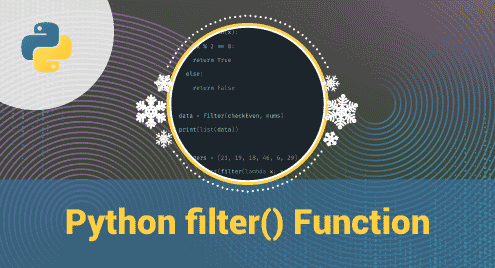Introduction
The filter() function helps the user to filter a sequence of elements according to the given condition to check if it is true or not. This function helps to filter elements in the sequence faster and more accurately. And the filtered-out elements are sorted in the original order.
Now we’re gonna guide you about using the filter() function in Python. Hope you understand.
Example
Filter numbers less than or equal to 6:
num = [3, 7, 5, 9, 1, 2, 8, 6] def func(x): if x > 6: return False else: return True number = filter(func, num) for x in number: print(x)
Output:
3
5
1
2
6
Definition
The filter() function prints the result according to the accepted condition.
The syntax
filter(function, iterable)
Parameter Values:
function: function to check element
iterable: sequence to be filtered
More examples
Example 1: Filter even numbers
num = [3, 7, 5, 9, 1, 2, 8, 6] def even(x): if x % 2 == 0: return True else: return False number = filter(even, num) for x in number: print(x)
Output:
2
8
6
Example 2: filters vowels
# filters vowels
def vowel(x): vowels = ['a', 'e', 'i', 'o', 'u'] if (x in vowels): return True else: return False # sequence letters = ['a', 'g', 'h', 'i', 'k'] # using filter() filtered = filter(vowel, letters) for x in filtered: print(x)
Output:
a
i
Conclusion
And we guided you on how to use the filter() function in Python.
Thank you for checking it out!




